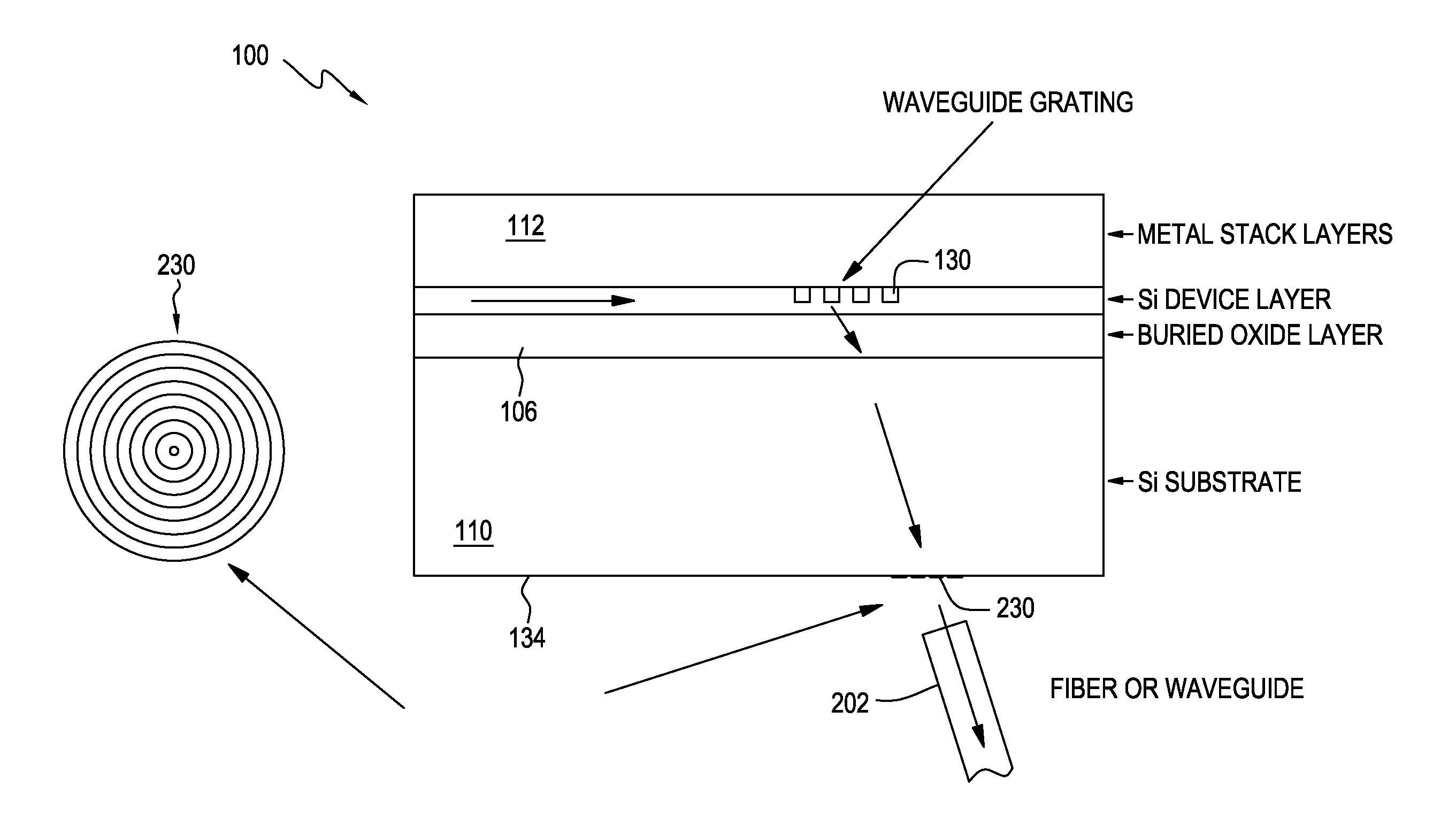Through-substrate optical coupling to photonics chips
a photonics chip and optical coupling technology, applied in the field of optical coupling between a waveguide and a photonics chip, can solve the problems of limited optical i/o real estate available at the chip edge, difficult integration of silicon based lasers or light sources, and difficult introduction of light beams to ics
- Summary
- Abstract
- Description
- Claims
- Application Information
AI Technical Summary
Benefits of technology
Problems solved by technology
Method used
Image
Examples
Embodiment Construction
[0040]Embodiments of the invention provide an optical coupling structure that receives a light beam and couples the beam into a waveguide. In a reverse manner, the optical coupling structure may also move light away from the waveguide and out of an optoelectronic IC. The methods of fabricating such an optical structure described below implement a variety of conventional semiconductor processes and combinations thereof, which include: lithography, etching, thin-film deposition, and anti-reflective coatings. Moreover, some of the embodiments also include methods that may employ conventional wafer to wafer attachment / bonding processes.
[0041]For simplicity, the description below and related figures describe an optical coupling structure that includes a silicon-based waveguide that consists of single crystalline silicon layer. In alternative embodiments the waveguide may be polycrystalline silicon and it may also comprise multiple layers with specific characteristics for each individual ...
PUM
 Login to View More
Login to View More Abstract
Description
Claims
Application Information
 Login to View More
Login to View More - R&D
- Intellectual Property
- Life Sciences
- Materials
- Tech Scout
- Unparalleled Data Quality
- Higher Quality Content
- 60% Fewer Hallucinations
Browse by: Latest US Patents, China's latest patents, Technical Efficacy Thesaurus, Application Domain, Technology Topic, Popular Technical Reports.
© 2025 PatSnap. All rights reserved.Legal|Privacy policy|Modern Slavery Act Transparency Statement|Sitemap|About US| Contact US: help@patsnap.com



